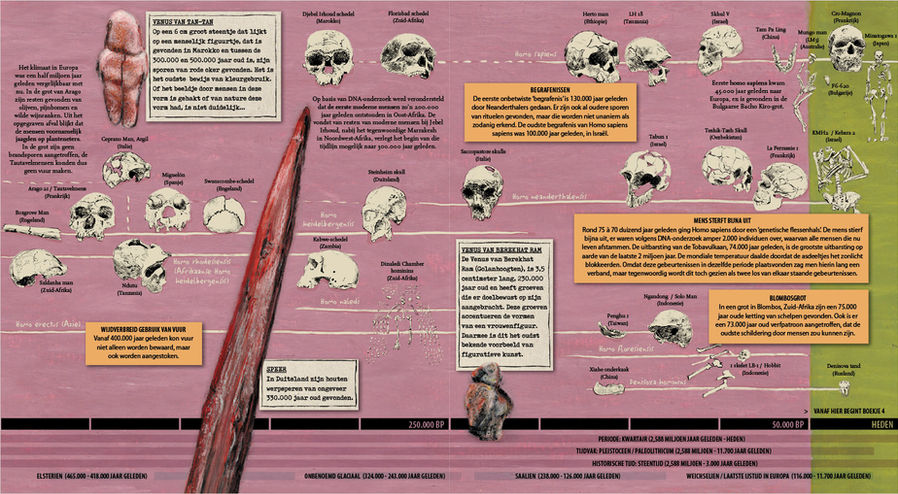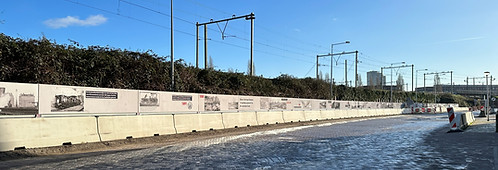Work in progress: Timeline of Natural and Cultural Curiosities
There is less time between man and Tyrannosaurus than between Stegosaurus and Tyrannosaurus. And the oldest tree still alive is nearly five thousand years old. This is even older than the Pyramid of Djoser, the oldest stone building in Egypt. It is these sorts of curious facts that inspired me to construct the timeline of curiosities.


About the project
In this timeline, time is rendered as accurately as possible, with the aim of giving a realistic insight into how long life has existed on earth and how briefly modern man has lived in this universe. Not only are the objects and events shown in their correct order in the timeline, but the distance in time between them is also proportionally represented. In this respect the timeline is unique.
Its backbone is formed by the great events and revolutions (the eight thresholds) in nature as described in the multi-disciplinary research field of ‘big history’. By illuminating certain details, the larger time-blocks are given their own identity. Sometimes funny, sometimes informative, sometimes amazing.
The timeline is composed of several booklets that can be folded out into a large poster. The last few centimetres of one timeline are always enlarged in the next. Thus there is room for showing all sorts of extraordinary events that man supposedly knows at the time of the timeline’s construction. The knowledge about various subjects featuring in the timeline keeps on developing. As a result, dates and connections in the timeline reveal more about the present than the past. Therefore, the Timeline of natural and cultural curiosities is first and foremost a personal portrayal of the beauty of time.
About the process
The third booklet, Timeline of humans, is the first file that I have 'completed'. It shows the last part (5 million years), of the evolution of humans. This is the part of the evolution after the split with chimpanzees, our closest relative.
I am currently working on booklet nr. 4, Timeline of first cultures and agriculture, which spans 80,000 years. Meanwhile I am collecting data for the other timelines as well.
I am working on this project in Dutch and will probably have it translated in English at some point.

Other timelines: a constant fascination
Timeline of Oostenburg
Research and design of a timeline of the developments in the new built neighbourhood Oostenburg Amsterdam, for the meeting room in the project office of housing association Stadgenoot.

Timeline of the cultural heritage in Oaxaca
Timeline of the cultural heritage in Oaxaca (Mexico), made as a poster for a workshop with city makers, politicians and students for plans for the future of Oaxaca. Made in the service of Urhahn | urban design & strategy, for the municipality of Oaxaca.


Timeline of projects
Timeline of projects (delivered products), employees and specials of Urhahn | urban design & strategy. On the occasion of the 25th anniversary of the agency, printed on a few meters long canvas for the reunion with all former employees.
<<< SCROLL/SWIPE HORIZONTAL OR CLICK ARROWS ON IMAGE >>>


Research into the history of playgrounds in Amsterdam
Research into the history of playgrounds in Amsterdam, as an intermezzo in Urhahn's publication ‘The Active City’. A treasure hunt in the image data base of Amsterdam and various publications about playing outside. I also designed this book.

Timeline 10 years of Oostenburg
Timeline showing 10 years of process and development of the transformation of area of employment into a mixed use neighbourhood in Oostenburg in Amsterdam. Parties involved, users, owners, plans and designs. Made employed by Urhahn | urban design & strategy, for the benefit of a promotional gift.


Family tree research
Family tree research (own family tree and also several family trees for others). Usually in a family tree software programme, but here trying to visualize it in time. Five generations and what time they have shared.





































